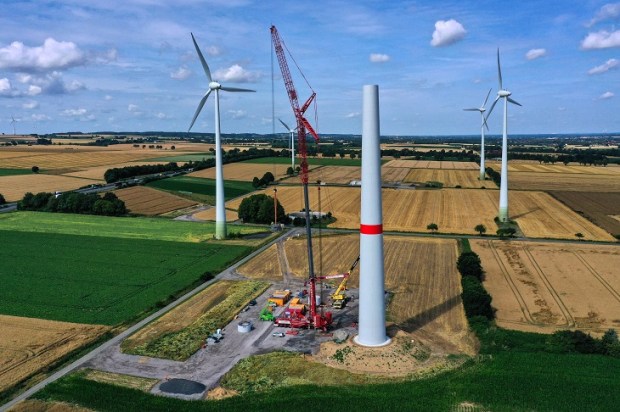All green energy generation schemes are dishonest schemes, for various reasons. They all need enormous tax-payer funding to make them economically viable. Why is that? Because there is no such thing as a ‘free lunch’. That means the laws of physics, the laws of nature, cannot be broken and you cannot get free energy or more energy out than you put in.
One common type of green scheme you will read about, or see on a YouTube video, is the idea that you can make a type of hydrocarbon fuel – often called synthetic gasoline – from just carbon dioxide (CO2) and water (H2O). Sounds amazing doesn’t it? Well, it isn’t.
The synthetic fuel is then burnt in an engine and it only produces carbon dioxide and water. It is totally clean and is Net Zero on carbon, because the carbon dioxide it generates was pulled from the atmosphere. They call this fuel recycling.
In this case, to turn carbon dioxide (CO2) into a hydrocarbon fuel (CxHy) via a chemical reaction you need to put a lot of energy into the reaction. Let’s look at why this must be so.
In normal combustion, some form of carbon is burnt in an oxygen atmosphere and it produces energy in the form of heat. That heat can be used to drive a vehicle with an internal combustion engine. The key point is that the energy available to do work is stored in the fuel (gasoline, diesel, gas etc) and the combustion – an oxidation chemical reaction – releases it.
I don’t want to get too nerdy on you but we do need to understand a few fundamentals. We can write down a simple equation to show combustion of a hydrocarbon fuel. The hydrocarbon fuel is made up of various amounts of carbon atoms (Cx) and hydrogen atoms (Hy), where x and y represent the number of atoms in the molecule. Burn the hydrocarbon and energy is released as shown here.
CxHy + O2 → CO2 + H2O + energy released (oxidation)
But the green scheme requires the production of a hydrocarbon fuel (CxHy) from just carbon dioxide (CO2) and water (H2O). The means we need to reverse the chemical reaction as such.
CO2 + H2O + energy added → CxHy + O2 (reduction)
To produce the fuel this way energy must be added. This is called a reduction reaction. But the laws of thermodynamics tell us that this is an uphill process. That means more energy is needed for the reverse reaction than the forward-burning reaction. This is because no process is 100 per cent efficient and there are always losses. The second law of thermodynamics tells us the natural state is to go to lower energy and greater disorder. That means all reactions will go downhill naturally.
One synthetic fuel manufacturer states that they use solar power for the energy source. That I am sure is true. But the crucial question is: what is the cost to store that solar energy in the new hydrocarbon fuel? This is a crucial question because using any sort of power to drive a reduction reaction is inefficient. It costs an enormous amount of energy. Also solar and wind are intermittent and inefficient, and only by massive subsidies can the so-called renewable energy generators exist.
Now, I don’t know the cost of a litre (or a gallon) of the fuel produced this way, but I would guess that it is at least 10 times the cost of the regular fuel refined from petroleum. This is because of basic physics.
It is by far cheaper to dig up and burn coal (50 per cent carbon), petroleum (CxHy) or natural gas (CH4, methane). These are in abundance in the crust of the Earth. But this is the point. Storing the energy in the synthetic fuel is very much like the natural processes that stored the energy in the coal or petroleum in the first place. Just we didn’t need to do it ourselves. The energy that drove those processes was enormous and not made-made.
These new carbon capture schemes are another form of madness, particularly when you consider the futility of it. This is because raising the CO2 concentration in the atmosphere hardly changes the global temperature at all. More basic physics tells us CO2 is a very poor driver of global warming, because of the Stefan-Boltzmann equation among other things.
Well-connected entrepreneurs make lots of money in these green schemes but only because of the massive subsidies. Fundamentally, I have shown that these systems – and they are all like this – are incredibly inefficient. What a con! But nowadays efficiency does not seem to be important anymore. Is that because of woke sciences and a poor understanding of basic physics?
Coal, petroleum, and natural gas are often referred to as ‘fossil fuels’. That means they were created in the Earth a very long time ago from dead plants and animals, and formed into fossils. But that is not settled science.
Coal is the best candidate to be called a fossil, because we find fossilised tree roots in coal beds. But consider this! Petroleum and natural gas vary in composition of alkanes (the different CxHy molecules it is made up of, e.g. methane, ethane, propane etc). The relative proportions of those alkanes depend on where oil or gas is found. That may mean they are not fossiliferous.
There is evidence that petroleum is not fossiliferous and that it has been cooked up in the Earth’s crust through natural processes from methane gas percolating through porous wet rock. The methane gas is probably primordial – meaning it was created when the Earth formed. And there is a lot more of it than you might imagine. Old oil wells are refilling suggesting the resource is much more abundant than first thought.
Here we have a resource favourable to human life. It is of a natural origin but the human race is throwing it away in the name of climate lunacy. Some of them are claiming to be able to cool the planet by inventing ultra-inefficient energy storage schemes when we are sitting on a treasure trove of cheap stored energy.
Basic physics tells us there is no free lunch. Sorry!
Got something to add? Join the discussion and comment below.
Get 10 issues for just $10
Subscribe to The Spectator Australia today for the next 10 magazine issues, plus full online access, for just $10.


























Comments
Don't miss out
Join the conversation with other Spectator Australia readers. Subscribe to leave a comment.
SUBSCRIBEAlready a subscriber? Log in